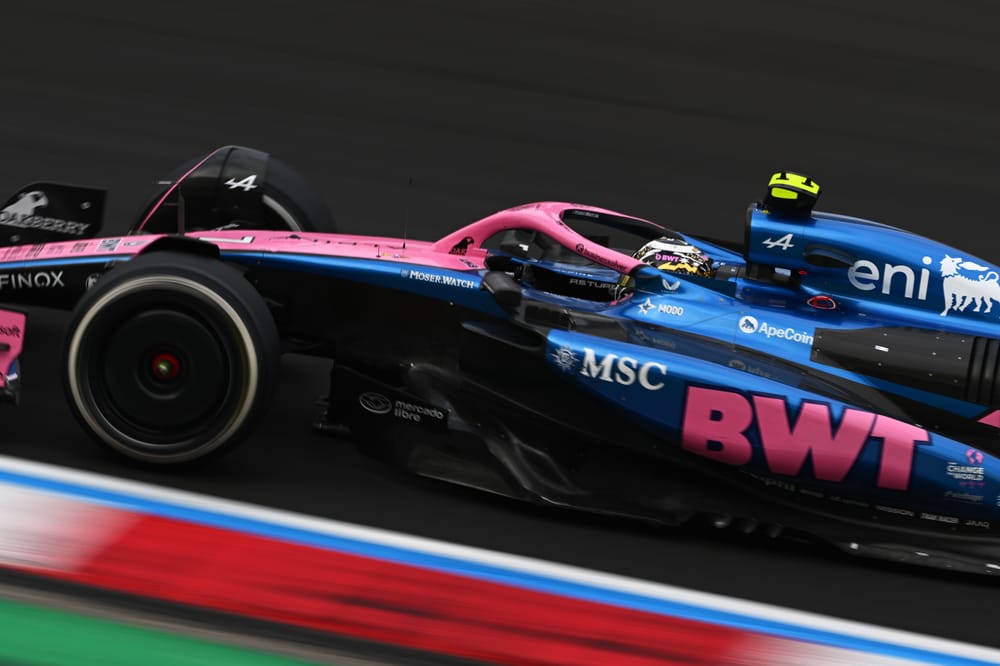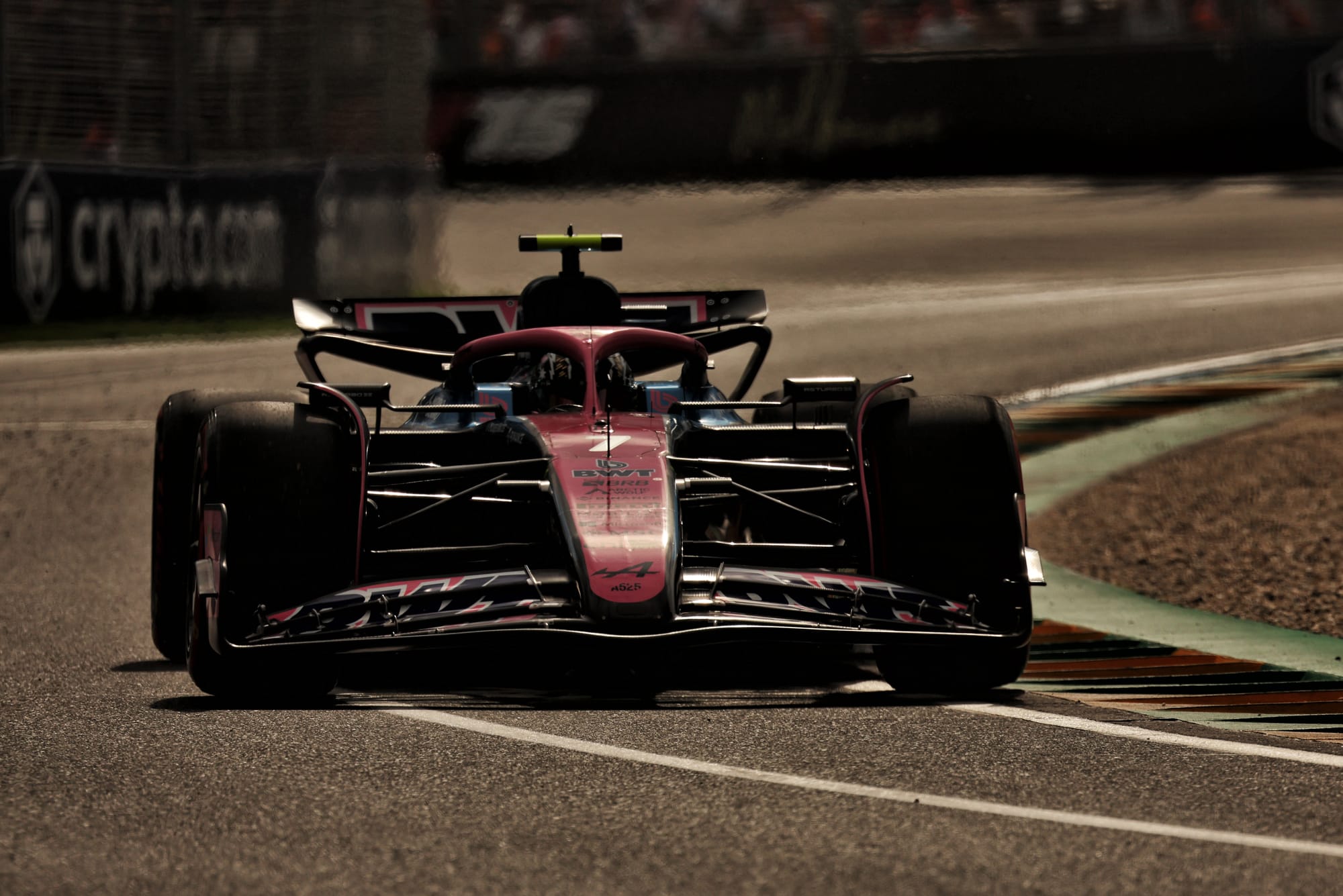Jack Doohan's career as a full-time Formula 1 race driver hasn't started well, crashing in Australia and suffering on-track incidents in both the sprint and main race in China.
But it's a very different story if you look at his driving in the broader sense.
That might seem a strange distinction, but the 22-year-old has caught the eye with his impressive pace so far this year, even if that hasn't translated to results, despite looking all at sea during the Bahrain test. And that's all thanks to a subtle car tweak that led to what he calls "a big sigh of relief".
During pre-season, Doohan visibly struggled compared to Alpine team-mate Pierre Gasly, which was reflected in the laptimes.
While the Alpine generally looked impressive in the hands of Gasly, Doohan battled car instability and was a step behind his team-mate in terms of pace.
But that all changed by the time F1 got to Australia, where Doohan's pace left a strong impression despite the blow of crashing on the opening lap.
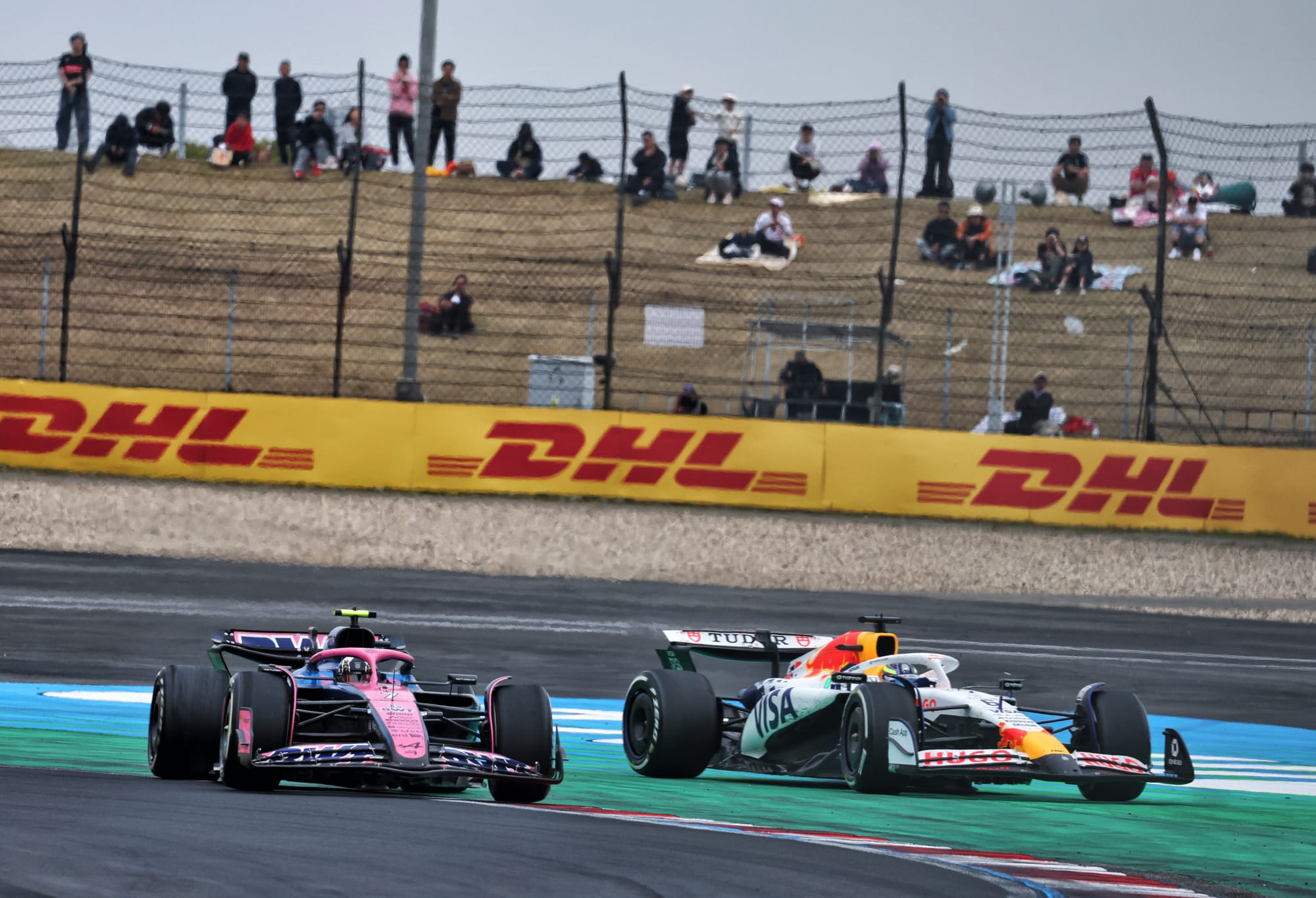
China was similar. There, Doohan showed similar pace to Gasly - as proven by both qualifying sessions - before a misjudged lunge on Gabriel Bortoleto in the sprint, and then a penalty for forcing Isack Hadjar off track during an otherwise well-executed rearguard action in the grand prix, compromised his results.
So what changed after testing? To understand that, first we need to consider the differences between Gasly and Doohan in terms of their driving style or, to be more precise, their tolerances.
Gasly is a driver who is incredibly quick when he can attack the corner late on the brakes, something he can do with a positive front end combined with a decent level of stability at the rear. With the car in that window, he's as quick as anyone, and faster than most.
Doohan describes his own requirements as "a bit further in that same direction, so I like even more front end than him". And it's this that led to a change after the test.
"I can deal with more instability and more moving around, let's say," he tells The Race when asked to compare his style to his team-mate's. "If we have the car in the same window, he would certainly be wanting it to be a little bit more stable. And with that comes some negatives for myself, which we were able to find some solutions to in the simulator between Bahrain and Australia.
"It was some small tweaks, which helped a lot with some of the difficulties I faced in Bahrain from my driving style, helping out with the car. I wasn't helping myself with some of my techniques trying to cure some issues, which was then having some other consequences.
"We found small things that were not necessary on the performance side, but on the side that helped me drive better, which brings me performance."
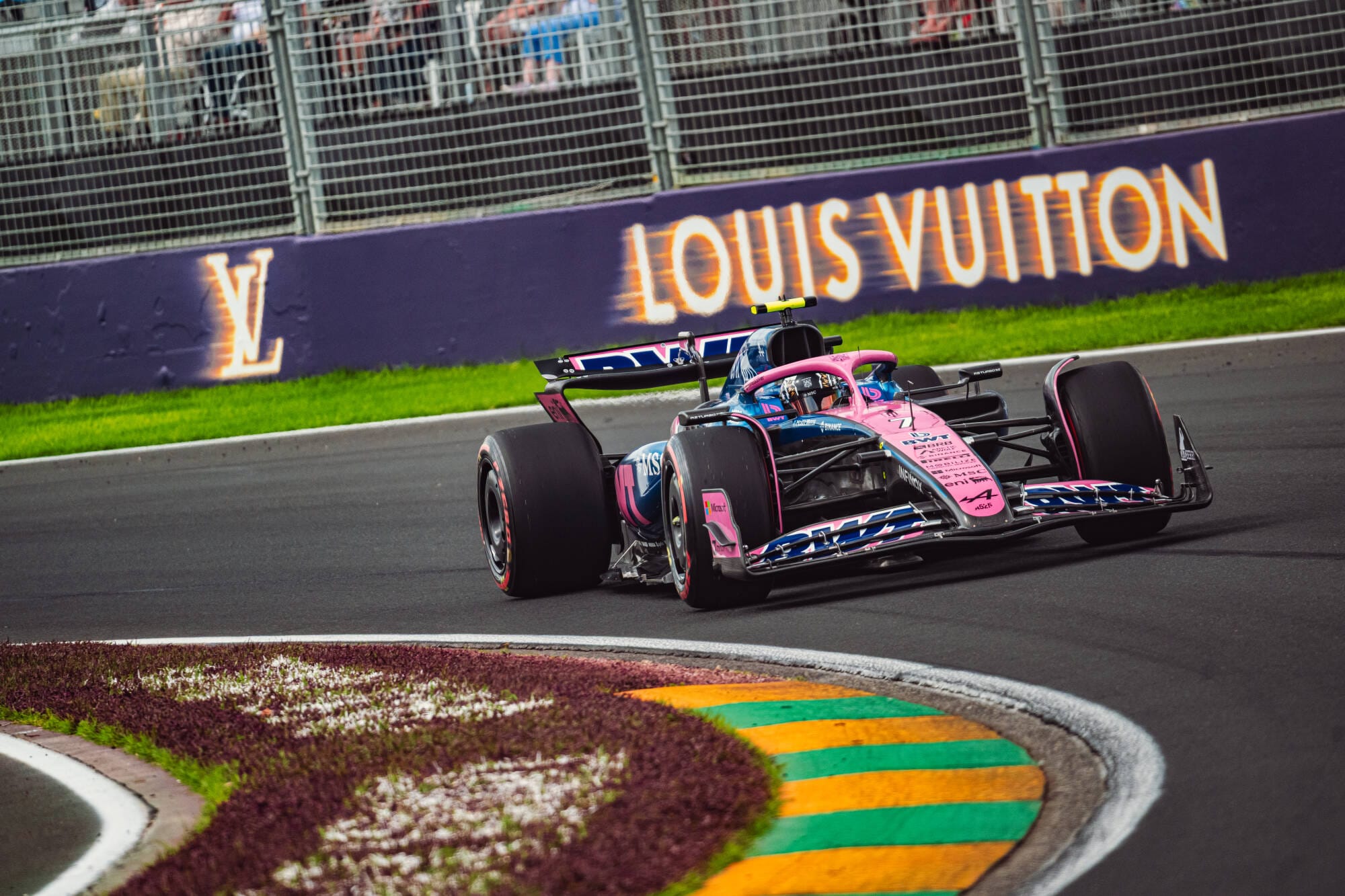
The change that was made was to the rear suspension geometry, understood to be a tiny increase in toe-out. In F1, minuscule changes can make all the difference and there's always a place for good old-fashioned, but "very minimal" mechanical modifications to have a big impact. And as Doohan explains, that not only gives him the right level of rear stability to go with the front end and improves turn in, but has downstream effects in terms of throttle application and tyre management.
"It's just some small steps on the rear end of the car that mean that I can put a bit less lock on as I get to the mid-corner, I'm not having to trail the brake as much, and not trailing the brake isn't then giving me as much entry instability from as much engine overbraking," says Doohan. "Because I'm not having to put as much steering lock on, I'm saving five degrees on the front tyre temperatures as well over a sustainable [long] run.
"I'm looking out for the rears, there's less instability from the engine over braking and then, because I'm not having instability on entry, I can turn the car better earlier, so I'm not having to put more lock onto the apex, because I'm already rotated.
"It's a combination that is helped from the entry that then makes my mid-corner better, and it also has better reactions over the lap [in terms of tyres]."
The set-up change, which Doohan says was suggested by race engineer Josh Peckett, made such an impact in the simulator that there was scepticism about whether it really could make such a big difference - "we wanted to keep our feet fairly firm on the ground to ensure that we weren't overreacting".
Subsequent trials with other drivers in the simulator confirmed the effect was being felt and it was applied to the car for FP2 in Australia. The result was an impressive turn of pace in Australia and China.
Gary Anderson's take
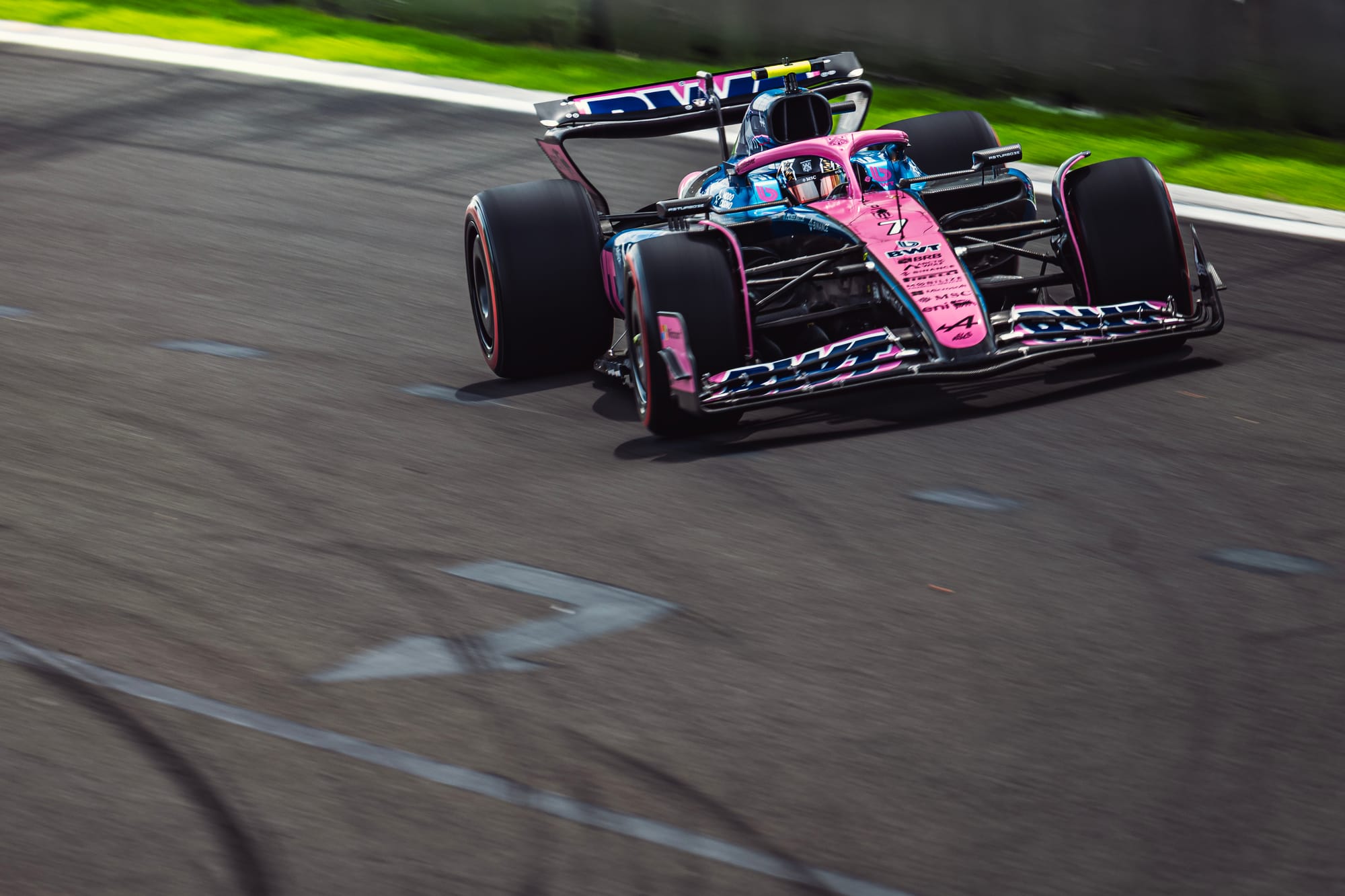
The ideal set-up for the driver is just to give the car an indication of which direction they want it to go in, then let the car do the rotation. If you can achieve that, then it's a lot easier on the tyres, as one end is not doing all the work.
To achieve that, you need to have confidence in the rear end. Initially, it feels like the car is going to oversteer, but in reality it is just assisting with the rotation. Instead of the front end doing all the turning, the workload is balanced between front and rear.
The thing with these cars is that all of the front braking is achieved with the actual brakes, so the loads go through the suspension legs as a torque so the anti-dive characteristics are very important.
The rear is different; a small percentage is achieved with the actual brakes so again the loads from that go through the suspension legs as a torque. But the rest of the rear braking is through the ERS system while it is recharging the battery pack.
This is a rearward horizontal load at axle height, so there's no torque reaction and it doesn't really affect the anti-lift characteristics. Getting the balance of these two correct for corner entry is critical and if you can achieve that it will improve the stability of the car all the way through the corner.
Small changes to the rear suspension set-up can make big differences. When you are braking and turning in, the car will be slowing down so the aerodynamic load will be reducing at both the front and rear.
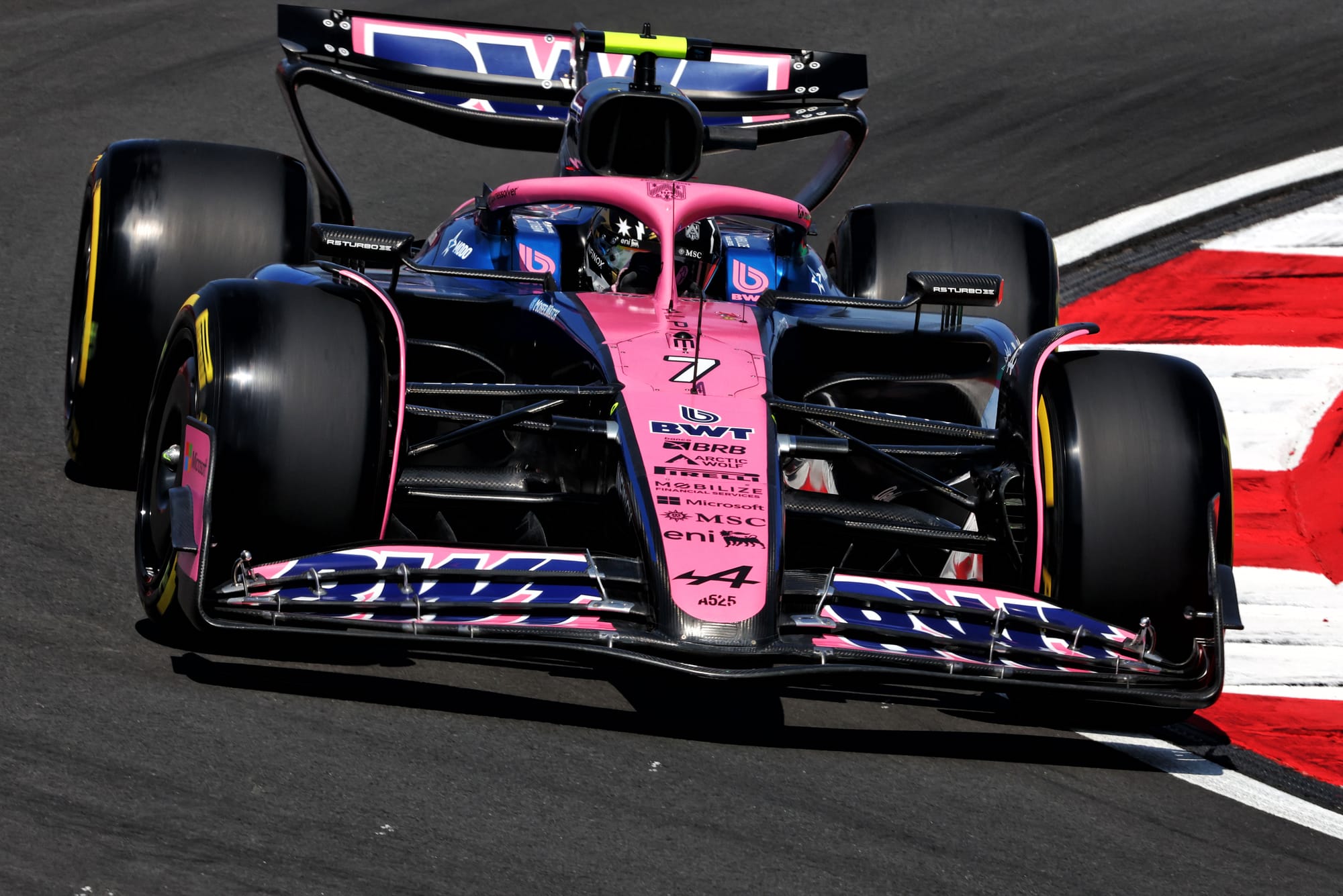
Letting the rear of the car rise just at the correct moment will help that rotation and that can be achieved with damper settings, changes in anti-lift characteristics and even just a small reduction in rear toe-in.
F1 cars are set-up with rear toe-in, which is the longitudinal angle of the wheels - so effectively the front of the two rear tyres will be fractionally closer together than the rear of the two rear tyres. Adjusting that by toeing it out slightly even by a tiny amount means the rears will still have toe-in, but will react in a slightly different way on turn-in and it can help rotate the car.
In Doohan's case, it appears that he was chasing an improvement in the response of the rear to match the front-end bite that he likes. Even a tiny change can have a big impact and that's helped him to be far more comfortable.
What TPC running didn't help
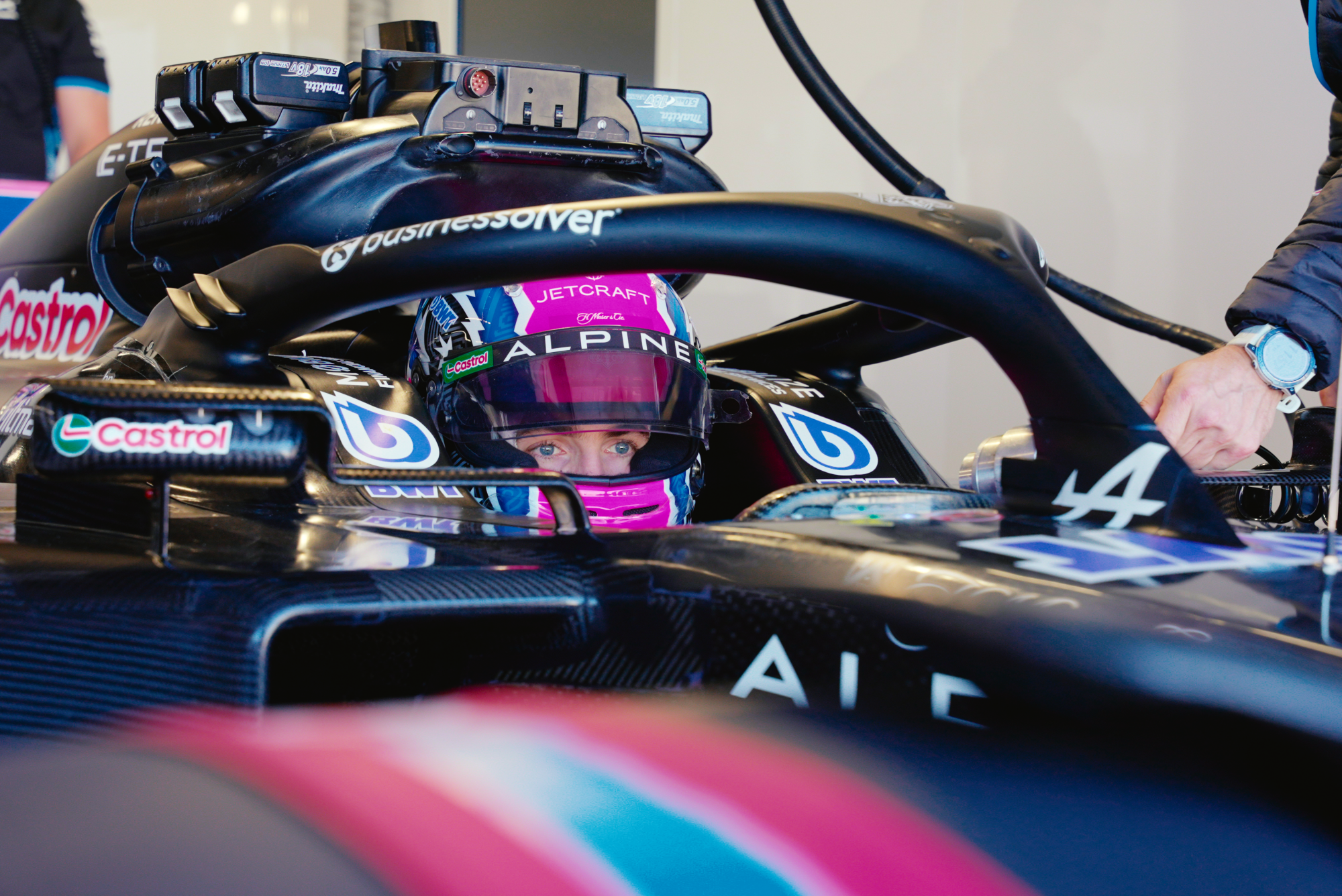
Doohan's progress has been encouraging. While he was well-prepared through TPC (testing of previous cars, for machinery of 2021-23 vintage) running, that has led to a steep learning curve when it comes to tyre understanding.
TPC mileage uses the Pirelli Academy rubber, known colloquially as demo tyres, and these behave very differently. When it came to tyre management, Doohan admits he struggled on his debut in Abu Dhabi last year despite some experience of the rubber in FP1 outings.
"I felt I was very weak in Abu Dhabi, coming from all my running being on the TPC tyre, which has a much higher degradation and drop off than the race tyre," says Doohan.
"So especially in the race, I was over-saving, over-anxious to hit this drop off, or to hit the window where I wouldn't be in a good position and that really was a big loss.
"I had to really quickly take what I could TPC running in terms of my knowledge, from a car, how I like to run, but on the tyre side very quickly focus on the post-season test, which was immediately running on this year's tyres, and not trying to think of all these tyres performing differently than that."
Fending off Colapinto
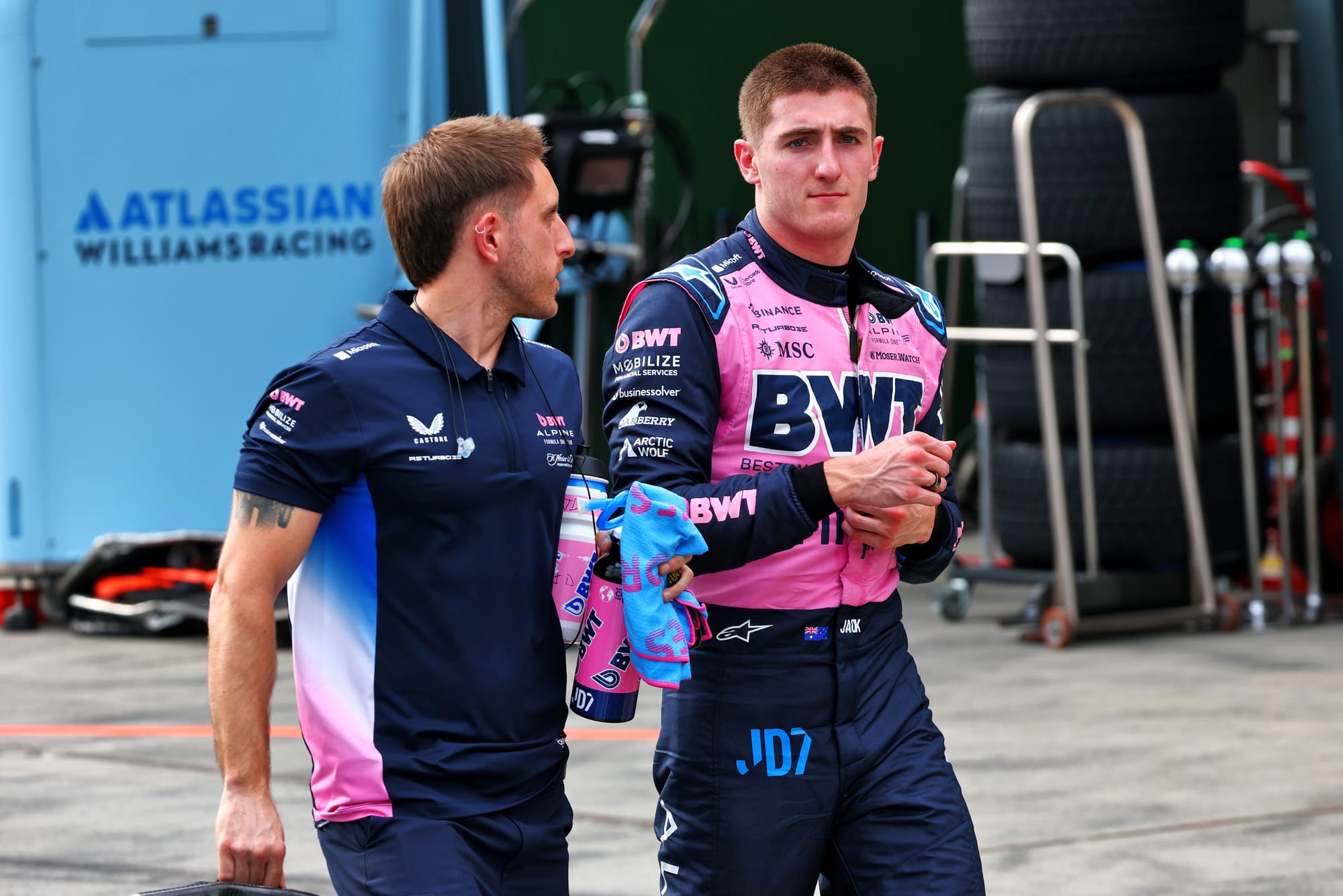
Doohan is under intense pressure thanks to the looming presence of Franco Colapinto, who few doubt will displace him if his performance level isn't satisfactory. Some argue, despite Alpine's protestations, that it will happen regardless of what Doohan does in the car.
It's not an easy situation for Doohan given there's no question that Colapinto merits a full-time drive in F1. That will come, but Doohan has resolved to ensure it's not at his expense. The only way to do that is to perform, which he's done in terms of laptimes so far this year but not yet in terms of race results.
That's something that must change at Suzuka this weekend. It's a track he raced at, and won twice on, in Asian F3 back in 2019, and despite sitting out FP1 to allow one of Alpine's other reserves - home hero Ryo Hirakawa - to run, it's a track where he has the chance to take the required step.
"There's a lot of positives," said Doohan after the Chinese Grand Prix when I asked for his verdict on the start of the season. "We haven't had that result quite yet to really show it, but the inner circle understands that and that's what's most important. The guys are super-happy in the team.
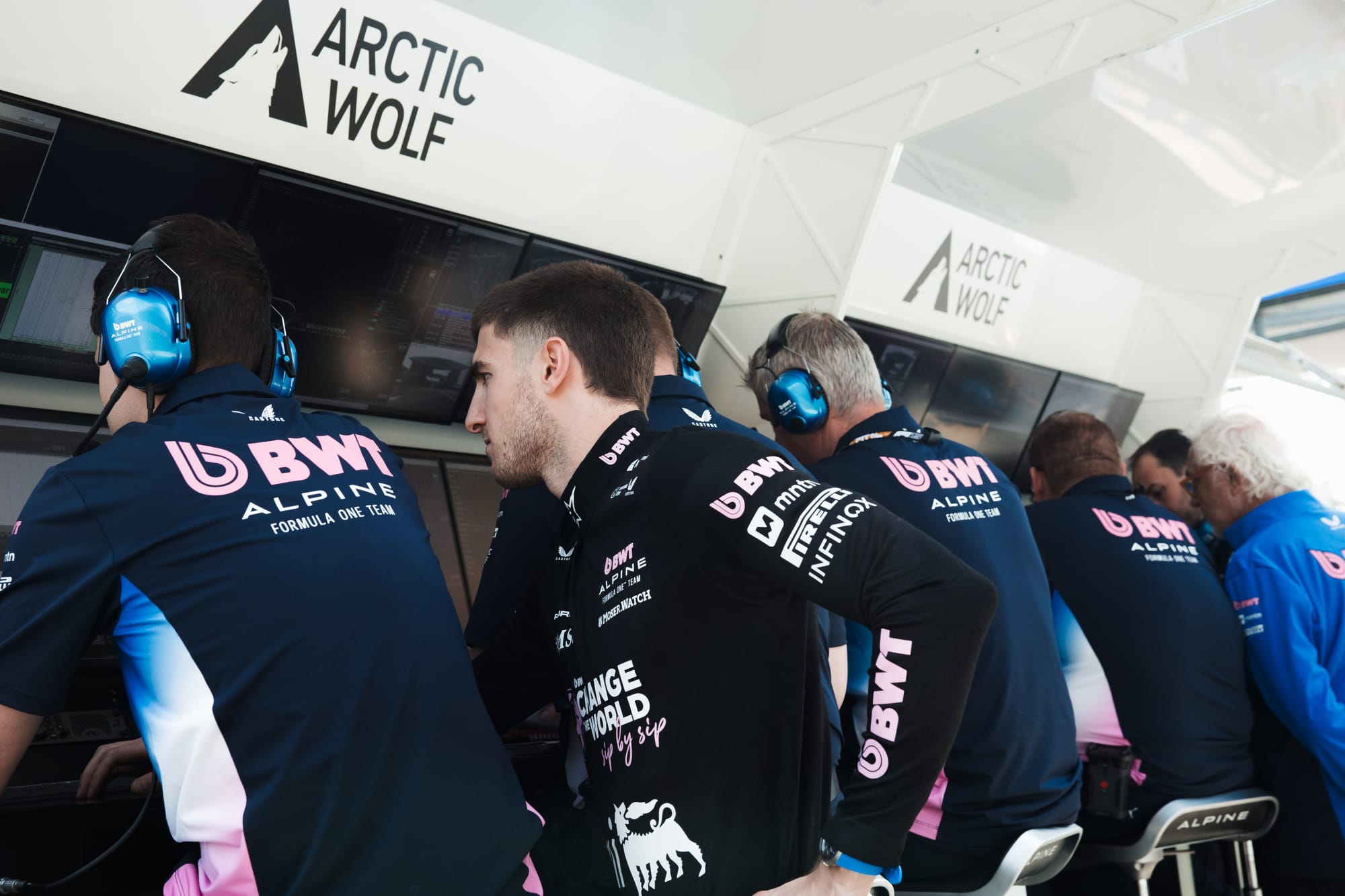
"For sure, Flavio [Briatore, de facto team boss], Ollie [Oakes, team principal], Luca [De Meo, Renault CEO], our backers, they're going to be wanting points. So when the car's going to get there, we're going to have to make sure that we're on it to ensure that we can maximise that.
"But for now, we're going to have to keep working, keep our heads down and hopefully Suzuka is a better track for us."
Regardless of where Alpine is relative to the opposition in Japan, Doohan knows he needs to deliver.
The pace appears to be there, now it's time to string that together into results - even if they are modest on paper. And if he does that, having already shown that the first priority - pace - is a box that's ticked, then he will make himself impossible to replace.

